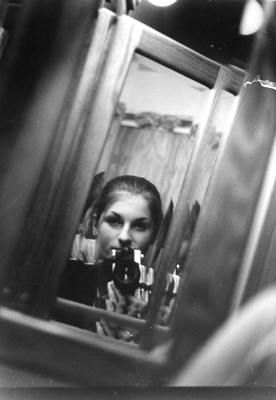All Nonfiction
- Bullying
- Books
- Academic
- Author Interviews
- Celebrity interviews
- College Articles
- College Essays
- Educator of the Year
- Heroes
- Interviews
- Memoir
- Personal Experience
- Sports
- Travel & Culture
All Opinions
- Bullying
- Current Events / Politics
- Discrimination
- Drugs / Alcohol / Smoking
- Entertainment / Celebrities
- Environment
- Love / Relationships
- Movies / Music / TV
- Pop Culture / Trends
- School / College
- Social Issues / Civics
- Spirituality / Religion
- Sports / Hobbies
All Hot Topics
- Bullying
- Community Service
- Environment
- Health
- Letters to the Editor
- Pride & Prejudice
- What Matters
- Back
Summer Guide
- Program Links
- Program Reviews
- Back
College Guide
- College Links
- College Reviews
- College Essays
- College Articles
- Back
Blindness to Beauty: An Exhibit of Artificial Inelegance
“I like colonic irrigation because sometimes you find old jewelry”, is just one of the golden one-liners of Joan Rivers’ time as a guest host on Johnny Carson (Joan Rivers Quote). The “Queen of Mean” made her name as a self-deprecating, celebrity-knocking comedian. At Rivers’ funeral, Howard Stern described her as “brassy in public, yet classy in private” (Joan Rivers Memorial). Classy, or elegant, was exactly who she was. A fine-looking woman free of wrinkles and full of hair, but she couldn’t even look in the mirror. This lack of self-esteem was ultimately the cause of her death, as during one of her many plastic surgeries, complications led to her suffering of cerebral hypoxia. Joan Rivers is our first exhibit to the cyclic paradox of cosmetic surgery.
Rivers strolled into the office of Dr. Norman Leaf for the three hundred and forty-eighth, and last time. Operations had begun to feel routine a long time ago. This time, it was another neck lift. Fifteen minutes into the endoscopy, Rivers lay in cardiac arrest and died in a medically-induced coma three days later (Plastic Surgeon). Rivers’ whole life, she was self-conscious of her physical attributes which led her to undergo all of these surgeries. But when you are on life support, no one really cares how you look anymore.
So what kept the Hollywood star away from complacency for the latter forty years of her life? Though comedians are in fact known to joke now and again, all jokes stem from a seed of truth. When Joan Rivers repeatedly insulted herself, her comedic identity masked the underlying truths of her self-consciousness. Through her ego-crunching knocks on Hollywood’s brightest stars, it is clear that Joan Rivers’ vision was confined to flaws. This blindness to beauty impacted her enough to the point that she could not live with herself anymore. Similar to food, natural products are much healthier than artificial ones. In an attempt to superficially make herself look better, Rivers left herself with nothing but a cycle of inelegancies.
When someone has a cosmetic procedure done, it often turns into a cycle, or an addiction. For example, if someone has their eyebrows raised, they are temporarily satisfied. However, after a few months, the patient will either become used to the raised eyebrows, or the eyebrows will simply go back to their natural state. Either way, the patient will be tempted to return to the doctors office for another operation. When this same event occurs on several different parts of your body, you end up with upwards of 300 procedures done. Certainly raised eyebrows, unproportionally thick lips, multiple facelifts, and an overall distorted facial structure do not meet the criteria of attractiveness. So what was Rivers thinking?
Addiction to plastic surgery is more often than not linked to underlying psychological disorders. Body Dysmorphic Disorder, or BDD, is a mental problem in which people think they look differently than they really do. As expected, one of the leading features of BDD is wanting one or more plastic surgeries (BDD). It is likely that Joan Rivers was part of the two percent of the population with a diagnosed case of Body Dysmorphic Disorder, as she demonstrated many of the inherent symptoms of the mental illness. The fact that many plastic surgeries do not satisfy their clients may also contribute to Rivers’ endless search for beauty. Although the risk of dissatisfaction could be enough to drive anyone away.
Plastic surgery is a high risk, low reward business. The United States spent more than twelve billion dollars on plastic surgery last year, as most minor adjustments price in the five figure range (Plastic Surgery Statistics). That is no chump change. One study shows that more than one in five people are horrified with their results, and the only chance to fix the problem is to get another surgery (Costly Mistake). Between the expensive cost and risk of dissatisfaction, it is the patient’s gamble to go under the beautiful knife of addiction.
It is probable that a multitude of reasons led to Joan Rivers’ quest for perfection. Factors that contributed likely include some degree of mental disorder, a self-deprecating demeanor, the cyclic addicting effect of procedure, and an inability to look through minor flaws. With a growing rate of cosmetic surgery fatalities occurring each year, artificial inelegance may be responsible for the human apocalypse before its morphological counterpart of artificial intelligence.
Works Cited
“Joan Rivers Quote.” A-Z Quotes.
Barron, James. “At Joan Rivers’s Memorial, Celebrities, Cameras and Crowds.” The New York Times, New York Times Company, 7 Sept. 2014.
“Former Joan Rivers Plastic Surgeon Remembers Her Zest For Life.” CBS Los Angeles, 6 Sept. 2014.
“Body Dysmorphic Disorder (BDD).” Anxiety and Depression Association of America, ADAA, American Psychiatric Association, 1 Aug. 2017.
“Plastic Surgery Statistics.” American Society of Plastic Surgeons, American Society of Plastic Surgeons.
Paxman, Lauren. “Costly Mistake: One in Five Who Have Plastic Surgery Are Unhappy with the Results.” Daily Mail Online, Associated Newspapers, 19 Oct. 2011.

Similar Articles
JOIN THE DISCUSSION
This article has 0 comments.
